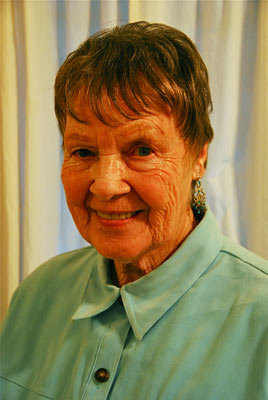The Art of Healing
An Interview with Tai Chi Teacher Leanna Snyder
Leanna Charliene Snyder is a Tai Chi instructor as well as mother, grandmother, and recently great-grandmother. She has been practicing the art of Tai Chi for 35 years, and teaching it for 27 years. She was born in the small town of Sonora California on July 5th, 1931. I had the honor of interviewing her about her practice and how it has shaped her life.
What is Tai Chi?

The term Tai Chi is made up of two Chinese characters: Tai, which means large and all-encompassing, and Chi, which means the ultimate or extreme point. According to the old Taoist philosophy, this natural unity is further divided into two forces: the yang (the positive) and the yin (the negative). Not only does Tai Chi exercise all parts of the body, but it also harmonizes the actions of the body, mind, and spirit. Tai Chi requires not only controlled motions but also deep and natural breathing as well as tranquility and concentration of the mind. Tai Chi is said to increase body awareness and improve mind consciousness. It is a form of physical meditation.
How are you involved in the art of healing?
Many come to me because they have back problems. Over the years, almost everyone who has come and has actually been serious about the art of Tai Chi. Because of what I bring from [my teacher] Master Quo, their backs have been healed. I am only the instrument. Because of the way I was taught, nothing could be changed in my set; it had to be exactly the way it was [when it was] brought from the Shaolin Temple. Many of the Tai Chi forms have become diluted, but the form that was intended to heal people comes in a pure form because we weren’t allowed to be instructors until it was settled in our bodies. That takes a long time.
Can you talk about your own teacher or teachers?
Well, my teacher was master Quo who was in San Francisco in Chinatown. He came from China – actually he was a governor of one of the providences of China, and he started learning martial arts when he was 12. During the Revolution in China they put Sifu – that’s Chinese for master – in jail “because he was wearing sunglasses,” but they were just looking for an excuse to put him away. He escaped and got to Taiwan, where he started doing his practice in the parks. A younger woman came to him as his student, and they ended up marrying and coming to the United States when Sifu was 70. He and his wife had a little son and a studio in Chinatown in San Francisco. It was a magical morning to be able to go up there and learn the Tai Chi set. He was considered the greatest Tai Chi master in the United States. He was also a rascal.
What personal struggles or beliefs have led you to this path?
Well, it was two-fold: I’d had back problems since I was 12 and at the time I went to Sifu I was having a lot of emotional stress in my life. I had lost my husband and my mother and I had three children to raise so I was having a very hard time mentally and physically. A friend of mine who was going to Sifu at the time took me by the hand and said, “I am going to pick you up at five in the morning and we’re going to Chinatown.” I thought he was crazy, but I went anyway and I fell in love.
What would you recommend to someone who is starting along a similar path of healing?
Practice. [laughs] Practice, practice. I think we need to find the right instructor for the right person. It’s a search to find the right person that can really help you. In our day and age there are so many people out there who are useful and some are not and we have to sift through it to see what works for us – not what somebody else is telling us.
What have you learned from your practice?
I’ve learned how to grow old graciously. I have a certain discipline about myself as if I were taking care of someone else. I do my practice in the morning, I’m able to prepare my own meals, I eat well, I do all the things that a senior should be doing and I feel like a have a friend – and my friend is Tai Chi.



